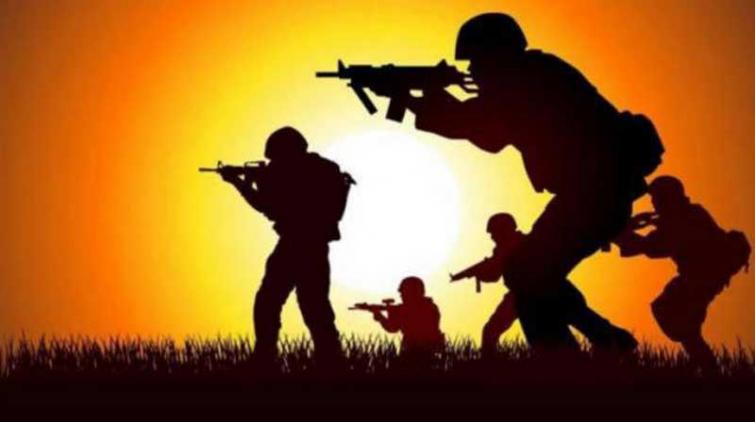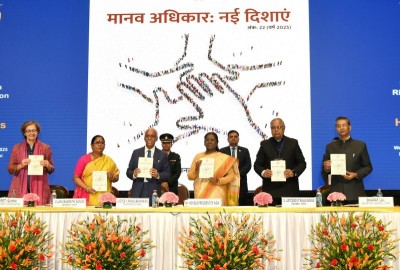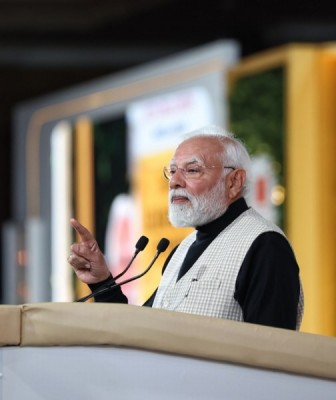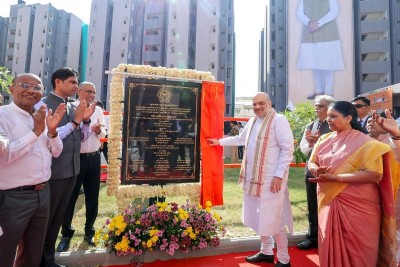 ULFA
ULFA
ULFA-I: Major Setback
The Indian Security Forces (SFs) with active cooperation of their Bangladeshi counterparts have successfully secured custody of Drishti Rajkhowa aka Monoj Rabha, the ‘deputy commander-in-chief’ of the Independent faction of the United Liberation Front of Asom (ULFA-I). Rajkhowa, along with four of his accomplices, surrendered before Indian Security Forces (SFs) on November 11, 2020, in Meghalaya, along the India-Bangladesh Border. A day later, on November 12, he ‘formally’ surrendered to the Unified Command at the Army’s Red Horns Division at Rangia in the Kamrup District of Assam. His accomplices were identified as Yashin Ali, Rup Jyoti Rabha, Babul Rabha, and Rahul Hazarika.
Bangladesh had earlier helped Indian SFs’ secure custody of several top leaders of the parent (undivided) ULFA, including then ‘chairman’ Arabinda Rajkhowa and ‘deputy commander-in-chief’ Raju Baruah, on December 2, 2009; and ‘foreign secretary’ Sashadhar Choudhury and ‘finance secretary’ Chitraban Hazarika, on November 1, 2009. On November 11, 2015, Bangladesh handed over the ‘general secretary’ of the parent ULFA, Golap Baruah aka Anup Chetia, and two of his prison mates who were arrested along with him in Bangladesh in 1997. The 'formal' split of the outfit took place in August 2012. While the faction led by ‘commander-in-chief’ Paresh Baruah was known as the Ant-Talks faction of ULFA (ULFA-ATF), later rechristened ULFA-I; the other faction was the Pro-talks Faction, ULFA-PTF, which is engaged in talks with the Government.
Meanwhile, in a November 12, 2020, release, after the Rajkhowa surrender, the Ministry of Defense (MoD) in India stated that it “was a result of relentless pursuit over the last nine months.” Indeed, Drishti Rajkhowa had escaped two encounters, one each in March 2020 and October 2020. On November 12, 2020, the Meghalaya Police tweeted, “He was on the run after narrowly escaping encounter with commandos of the Meghalaya police in Bolbokgre Village, South Garo Hills on October, 20, 2020.”
The 50-year-old Rajkhowa, who hails from Belpara village in Rongjuli, Goalpara District, Assam, joined ULFA in 1988. He came to prominence when top leaders of the outfit, including Arabinda Rajkhowa, were "pushed over" from Bangladesh. A close confidant of the ‘commander-in-chief’ Paresh Baruah, who is currently in China, Rajkhowa was a known explosives expert. He was reportedly the mastermind behind gun-running in India’s northeastern states as well as in Bangladesh. Rajkhowa was one of the primary suppliers of weapons to various insurgent groups. He was made the ‘deputy commander-in-chief’ of ULFA-I in November 2011, along with Bijay Das aka Bijay Chinese. Bijoy Das came ‘overground’ in February 2013, but Rajkhowa remained as ULFA-I’s lone ‘filed commander’, and was thus a most important catch for the SFs.
Not surprisingly, reacting to the surrender, the Army stated,
Surrender of Drishti Rajkhowa, along with four Cadres of ULFA(I), has certainly dealt a severe blow to the ulterior motives of ULFA(I), which had been trying to gain prominence and revive insurgency in lower Assam by undertaking large scale recruitment. Drishti Rajkhowa and his accomplices will, in the times to come, motivate other misguided youth/cadres to follow their lead and come over ground…"
Indeed, the surrender has evidently disturbed Paresh Baruah. In an attempt to stop further defections from the outfit, he declared, “he [Rajkhowa] has taken this step with approval from the organization and on humanitarian grounds” elaborating that “his wife is suffering from cancer and they have two minor children.”
On November 13, ULFA-I announced that Michael ‘Asom’ Dekaphukan aka Joy Chandra Das had replaced Rajkhowa as ‘deputy commander-in-chief’. Dekaphukan hails from the Amlaga village in the Sonitpur District of Assam and is in charge of the outfit’s camp in Myanmar’s Sagaing Division.
Significantly, at the time of Bijoy Das coming overground in February 2013, it was said that “(Bijoy Das) Chinese was the last field commander of the Paresh Barua faction” and that “he is left with only three leaders now — Jibon Moran, Michael Dekaphukan and Drishti Rajkhowa”.
With Drishti Rajkhowa gone, Paresh Baruah is now effectively left with two top leaders – 'associate general secretary' and 'finance secretary in-charge' Jibon Moran and the newly designated deputy commander-in-chief’ Michael Dekaphukan – to run the outfit at a time when, according to official data, "cadre strength in ULFA (I) is around 250" and the outfit is going through its worst phase.
The outfit suffered heavily when the Myanmar Army (Tatmadaw) targeted Indian Insurgent Groups in January 2019, principally focusing on ULFA-I. The group’s activities on the ground almost came to a halt after the Tatmadaw operations.
However, attempts to revive the organization continued, as it looked for new cadres.
SFs busted an ULFA-I recruitment racket and arrested four cadres and six over ground workers of the outfit, rescuing seven minors from six districts of Upper Assam on April 21-22, 2020. The Districts included Golaghat, Jorhat, Sivasagar, Charaideo, Dibrugarh and Tinsukia. An official release stated, "The apprehended persons are actively involved in the recruitment racket. The rescued youths belonging to well-to-do families were influenced and lured into joining the insurgent group through social media and online propaganda videos."
To make its presence felt on the ground, ULFA-I carried out an attack in July 2020, the first reported attack after Tatmadaw’s operations in January 2019. On July 29, three Assam Rifles (AR) personnel were killed and another five injured when terrorists ambushed their vehicle at Khongtal village in the Chandel District of Manipur. ULFA-I subsequently sent an email claiming that it, along with the Manipur Naga People’s Front (MNPF) and the Revolutionary People's Front/People's Liberation Army (RPF/PLA) had jointly carried out the attack.
The surrender of Drishti Rajkhowa will, however, likely a detrimental impact on Paresh Baruah’s recent attempts to resurrect the outfit.
It is imperative, however, for the Governments – Union as well as State – to remain cautious in their policies and ensure that no new opportunities are provided for the rebel outfit to exploit the emotions of the local populace.
Significantly, ULFA-I took advantage of several such opportunities to regain its hold in the region after suffering the jolt of the January 2019 Tatmadaw operations. One such opportunity arose from the passing of the Citizenship (Amendment) Act, 2019, (CAA 2019) by Parliament in December 2019 (in the Lok Sabha on December 9 and Rajya Sabha on December 11). ULFA-I declared itself in favour of the agitation that followed this legislation, which spread across the Northeast region and was particularly intense in Assam. The enactment of CAA 2019 on December 12, 2019, when it received the President’s assent, was seen by groups representing ‘indigenous’ interest in the region as a measure that not only legitimised present ‘illegal’ migrants, but also invited future migrations from neighbouring Bangladesh. The resultant demographic shift, these groups fear, would deprive indigenous populations of their political, cultural and ethnic rights. ULFA-I sought exploit such fears for its own ends. Not surprisingly, ULFA’s support to the CAA agitation helped the outfit regain some influence among locals and aided recruitment of new cadres.
More recently, the State Government called-off the Rongali Bihu (April 14-20, 2020) celebrations citing COVID-19, but then allowed the Durga Puja celebrations, albeit under restrictions, despite the situation on the ground being relatively worse. On September 4, 2020, ULFA-I alleged that the State Government is allowing Durga Puja celebration to please Prime Minister Narendra Modi’s extremist Hindutva agenda. Another such emotive issue is the inter-state border disputes in the northeast which flared up recently, particularly between Assam and Mizoram.
One of the most dreaded and longest surviving insurgent groups, which is primarily responsible for the residual troubles in India’s northeast, ULFA-I is now at its lowest ebb. The opportunity to end its influence in Assam and the wider Northeastern neighbourhood is real, and the group must be brought under relentless pressure. Patterns of political adventurism and policy misdirection in the recent past have created opportunities for the revival of insurgency, and the risk of a revival of the region’s multiple insurgencies is real, in the context of such mismanagement by the political executive and state agencies.
Support Our Journalism
We cannot do without you.. your contribution supports unbiased journalism
IBNS is not driven by any ism- not wokeism, not racism, not skewed secularism, not hyper right-wing or left liberal ideals, nor by any hardline religious beliefs or hyper nationalism. We want to serve you good old objective news, as they are. We do not judge or preach. We let people decide for themselves. We only try to present factual and well-sourced news.







